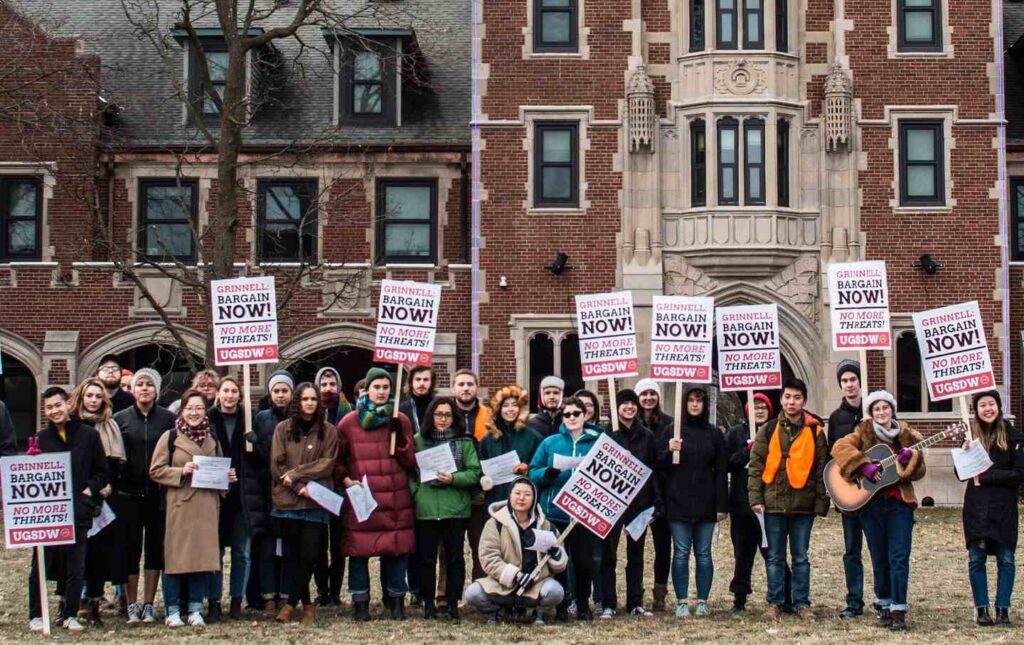Undergraduate Organizing

The resident assistants, she thought in 2021, needed a union. This past March, they voted overwhelmingly to have one. Contract negotiations began Friday, capping a week when residence life workers at Swarthmore College and Smith College voted to unionize.
Resident assistants, known as R.A.s, are on the march, part of a wave of unionization by undergraduates who work in places like dining halls and libraries, and attend schools like Harvard, the University of Oregon and Western Washington University. This year alone, around 20,000 undergraduates, many of them at California State University, the largest four-year public university system in the country, have cast ballots in union elections or secured the opportunity to vote.
“It’s really not hard to see that, up until this point, universities have had all of the leverage,” said Ms. Betsko, now a senior, who is majoring in English. “We see that students have been exploited by this.”
The students who have joined the labor movement account for a fraction of the country’s 15 million or so undergraduates. But the movement is nevertheless a glimpse at how campus culture is shifting. As families increasingly question whether a college education is worthwhile, undergraduate workers like R.A.s are often asking the same question about their campus jobs. And the R.A.s, who have often been compensated with benefits like free housing, are now seeking wages and workplace protections that were scarce a decade ago.
“We have spent most of our lives navigating systems that were not built for us and not built in our favor,” said Nathan Duong, a junior at Boston University. “So you take that, and then you put that in context of just a broader uptick in labor organizing across the country, and I think it makes a lot of sense.”
Many university leaders believe they already provide sufficiently generous benefits to student workers, such as housing that can be worth $15,000 or more a year. And some have sometimes waged aggressive legal efforts to try to derail unionization.
I don’t think older people get the level of rage that exists among young people. That rage is too often accompanied by hopelessness. But one area where people feel some level of hope is the idea that they can organize to improve their terrible workplaces. And I don’t care whether people think being an RA is “real” work or not. They are getting paid, they are providing labor, it’s work. The important thing for me is how this can create generations of union activists at an extremely young age, people who don’t just know that they like unions in an abstract way, but people with real world experience in their own unions. That’s not something we have seen much and what we really haven’t seen much is 18-22 year olds in union leadership roles, which naturally happens here because they age out of the job. Where this goes can almost only be good places. I hope this happens at my employer. In fact, I just sent this article to my labor history class to encourage them to take it up themselves.


